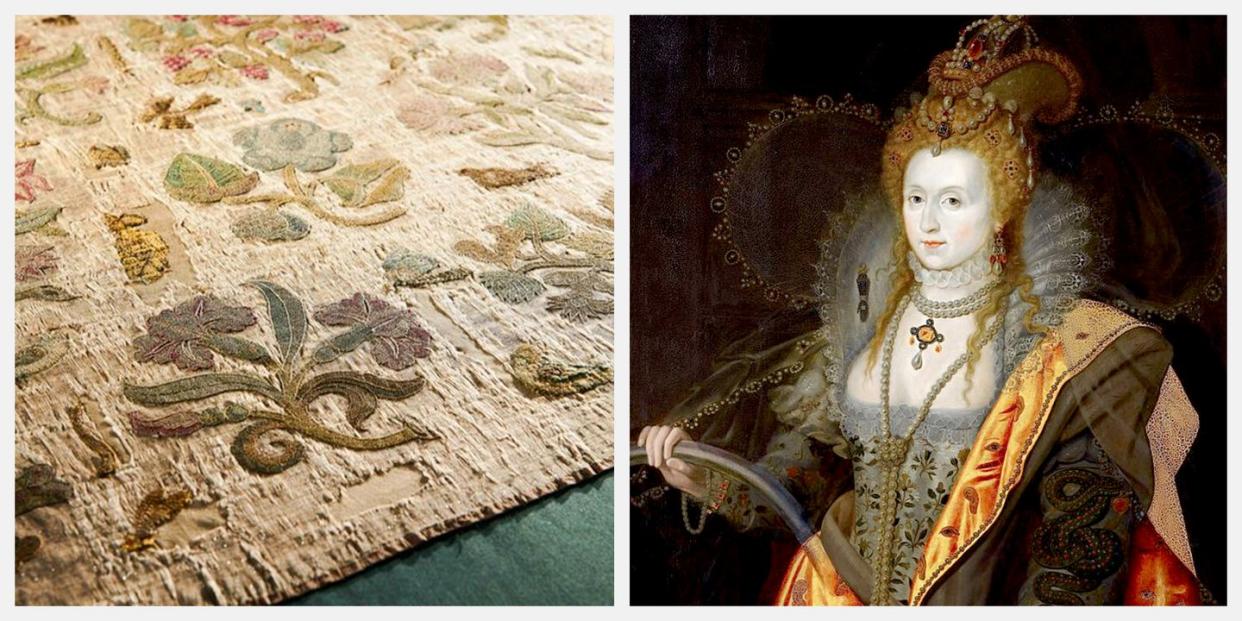How Queen Elizabeth I's Only Surviving Dress Was Discovered in a Rural Church

Imagery of Queen Elizabeth I's fashions has been well-preserved through her many portraits. Yet, when it comes to actual items of clothing, it was thought that nothing had survived—until very recently, when a piece of altar cloth was identified as part of a dress belonging to the Virgin Queen.
The elegantly embroidered fabric will be on display from Saturday, October 12 for tourists to Hampton Court Palace, southwest of central London. Visitors to the small dimly-lit room just off the palace’s courtyard will find themselves peering over what is thought to be the only object of its kind in the world, in an exhibition entitled "The Lost Dress of Elizabeth I." Alongside the cloth is the iconic "Rainbow Portrait" of Elizabeth, which shows her wearing a strikingly similar dress.
"As a historian I try to retain quite a lot of academic doubt and to interrogate things, but the more and more we researched into this, the more it became difficult to argue against it being Elizabeth’s dress, because the evidence is so strong," Historic Royal Palaces curator Eleri Lynn tells Town & Country about the piece.

"You’ve got the cloth of silver, which is reserved by law for the upper levels of court," says Lynn. "We know that Elizabeth very jealously guarded the finest fabrics for herself. So the fact that this is made of the finest fabric, the finest materials, it would seem to suggest that at this time, Elizabeth wouldn’t really have stood for anybody else wearing it. From the Rainbow Portrait, we know it was fit for a queen."
The location where the cloth was found also reinforces its provenance. Preserved for centuries as a altar cloth in Bacton, Herefordshire, Lynn believes it was sent there around the time of Elizabeth’s death, in tribute to her faithful servant Blanche Parry who served as her Chief Gentlewoman of the Bedchamber. Blanche was born in Bacton, and Elizabeth is known to have gifted clothing to her. "When I walked into the church it was really obvious to me that this was something quite exceptional," Lynn says.
A painstaking three-year conservation project followed to stabilize the fragile fabric and find further evidence of its creation. Lynn believes it would have taken around 600 hours to originally embroider the piece, and identified the material as Italian cloth of silver, woven with silver bullion. The conservation team tested the dyes and discovered that it also contained expensive Indigo and red dye sourced from Mexico. The embroidery has been identified as a combination of the work of a master craftsman, interspersed with motifs done slightly later by noblewomen.

"All the evidence we have of the Tudor wardrobe is portraits and beautiful descriptions, and a few accessories here and there," Lynn says. "So to come across an item of such a good provenance to the Elizabethan court, and to have it be so beautiful and opulent and rich, it’s a window onto the past. The power of clothing actually is that it tells you about the time in which is was made but also the person who wore it. And so the fact that this may very well have been adorning the body of Elizabeth I is a way to get up close and personal to her."
Lynn added about the location of the exhibition: "And of course bringing it back here to Hampton Court is also incredibly powerful. Because she lived here, these are the rooms that she knew. And it’s very possible that it was here before."
"The Lost Dress of Elizabeth I" will run from 12 October 2019 until 23 February 2020 at Hampton Court Palace, on loan from St Faith's Church, Bacton.
You Might Also Like